Are you planning to spend 2 days in Barcelona?
The cosmopolitan capital of Spain’s Catalonia region is famous for its art and architecture – notably Antoni Gaudí – sandy beaches, one of the world’s top football clubs, vibrant nightlife and a world-beating food scene. With so many things to do in Barcelona, deciding how to spend your precious few days there can be a tough call.
I won’t lie; two days in Barcelona aren’t enough to hit all of the city’s highlights. That said, in 48 hours you can explore its major attractions and try some of the region’s best food and wine.
Hit the ground running with my relaxed 2-day Barcelona itinerary.
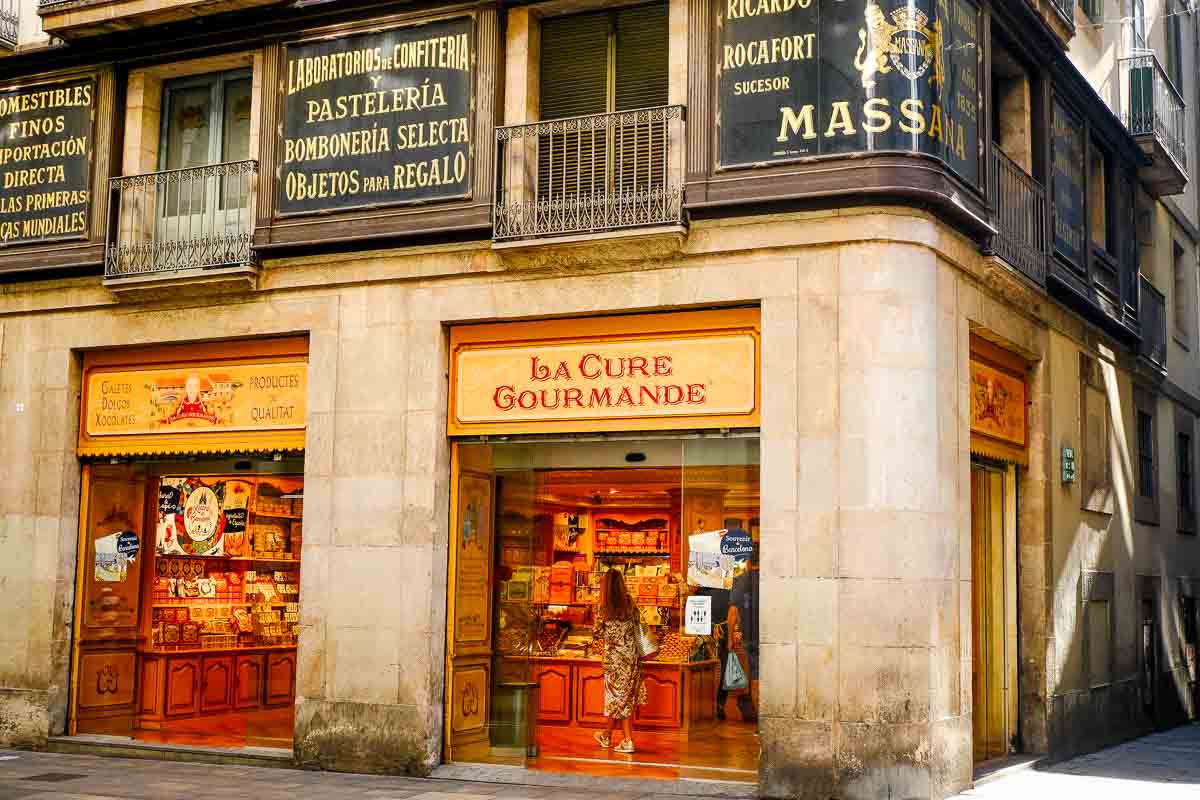
Some articles on this website contain affiliate links. This means that I may earn a small commission if you make a purchase through these links. As an Amazon Associate, I earn from qualifying purchases. Read the full disclosure here.
2-Day Barcelona Itinerary + Map
This is how your two days in Barcelone will shape up:
DAY 1 – getting to know barcelona
DAY 2: GAUDI’S WHIMSICAL WORLD
To help you on your way, I have made a map of the sights you will see during your two days in Barcelona. Attractions included on day one of this Barcelona itinerary are coloured red on this map; day two sights are in black.
Click here for an interactive map or on the image.
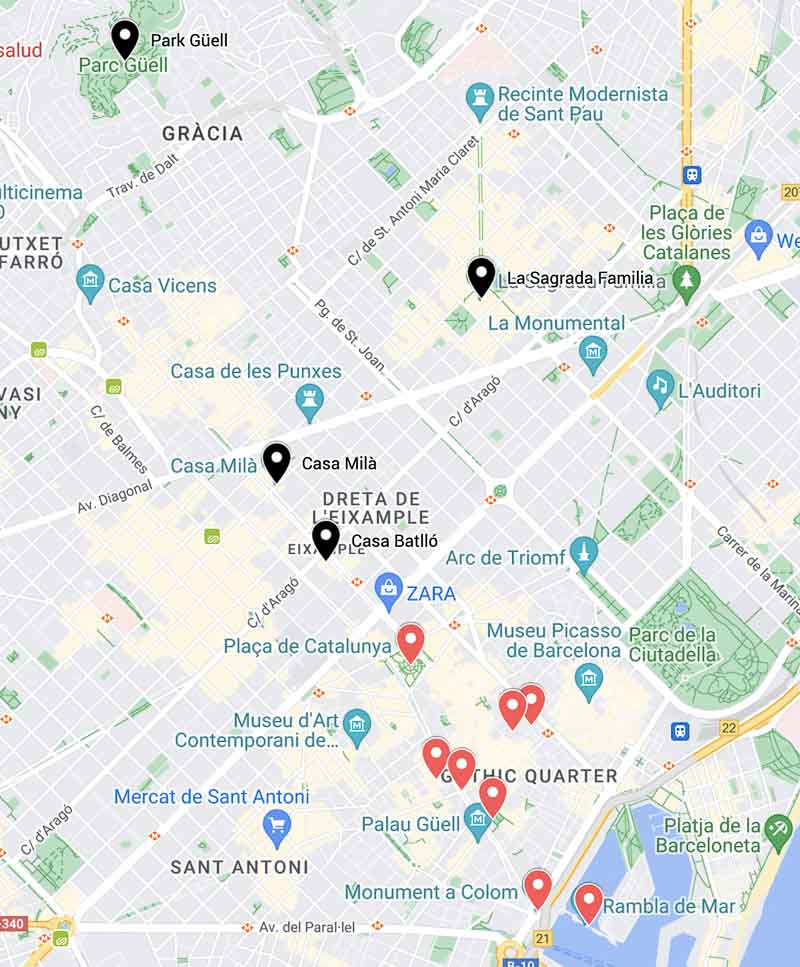
Day 1 – Uncovering Barcelona’s History
One of the things that makes Barcelona one of Spain’s most captivating cities is visiting the treasures left behind from its rich history.
The city was founded by either the Phoenicians or the Carthaginians. Barcino (as it was then known) was claimed by the Romans in the first century B.C. who renamed it Barcelona.
Barcelona fell to the Visigoths in the 5th Century who held it until the Moors invaded in the 8th Century. Catalonia was established by Count Borrell II in the year 988. Eventually, Barcelona became a part of the Crown of Aragon.
During your first day in the city, you will be transported back through the centuries courtesy of a majestic cathedral, an enchanting Gothic Quarter and elegant plazas.
Port Vell
Your Barcelona itinerary starts at Port Vell, the city’s old port. With its esplanade that is lined with palm trees and public art, this is one of the most picturesque parts of the city. It is also the starting point for catamaran cruises along the harbour.
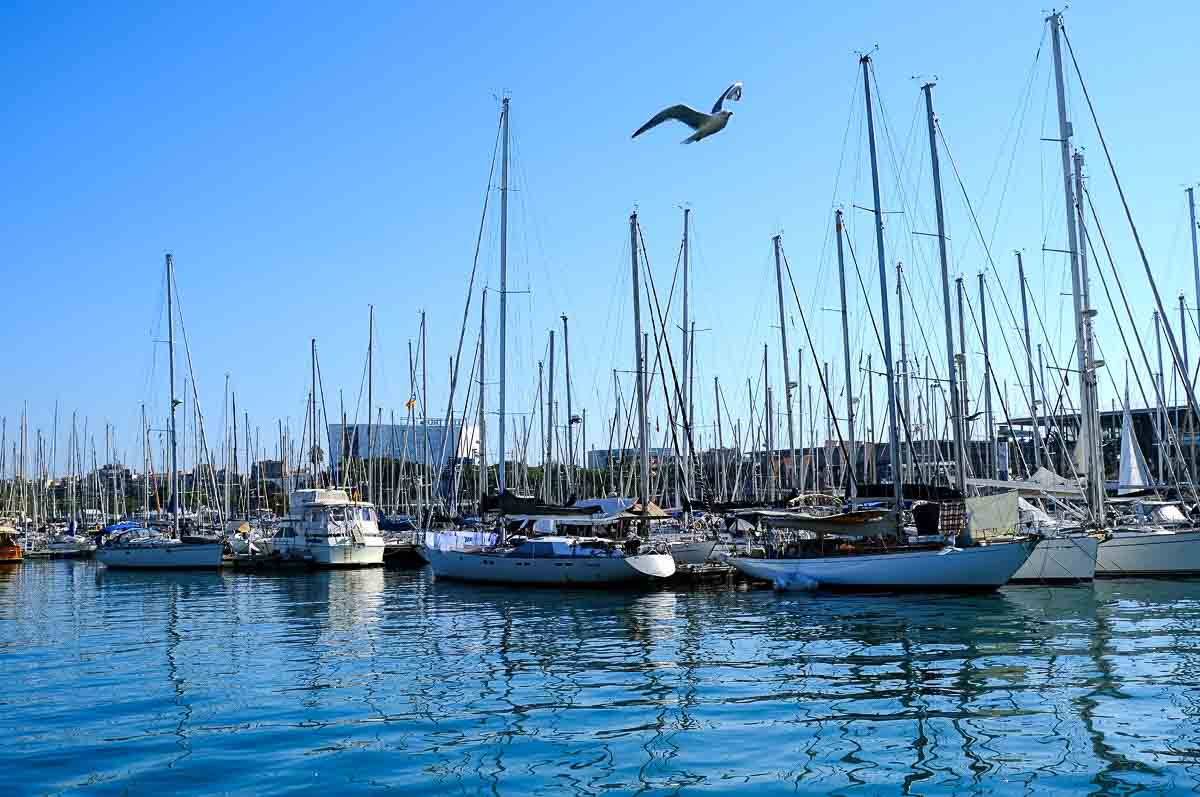
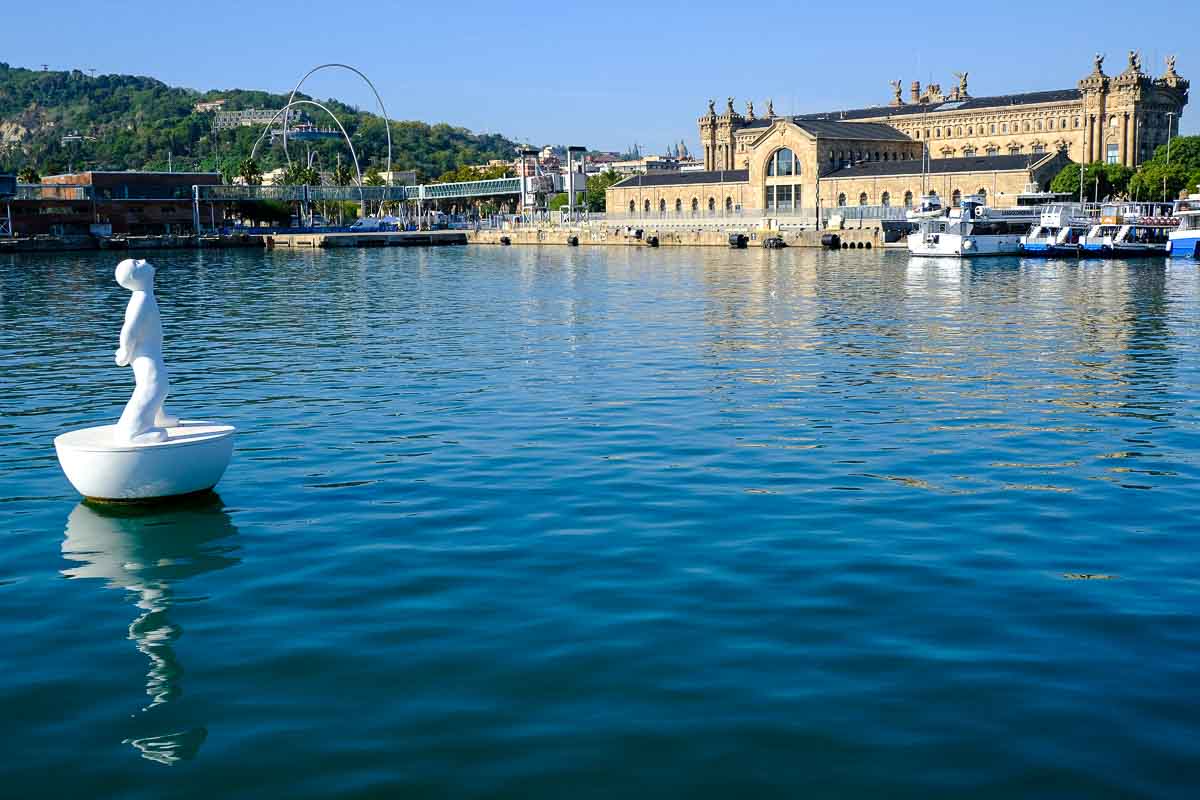
Close by is a Barcelona landmark, the Columbus Monument.
Jutting 60 meters above the southern end of La Rambla like a giant exclamation mark, this monument to Christopher Columbus was built in 1888 to commemorate the explorer’s first voyage to the Americas.
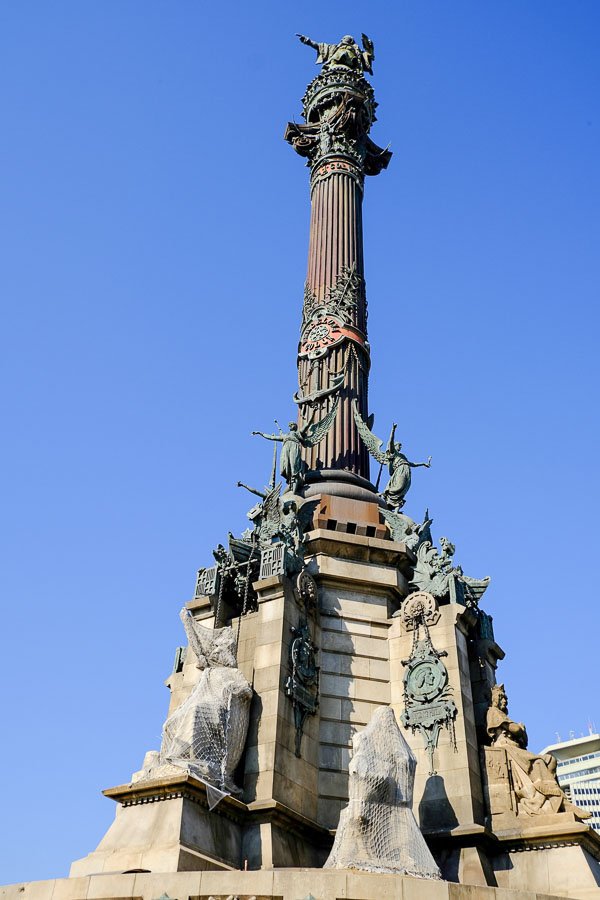
Barcelona’s Gothic Quarter
With its enchanting squares and labyrinth of narrow medieval streets, the Gothic Quarter (Barri Gòtic) is one of the oldest and most charming districts of Barcelona.
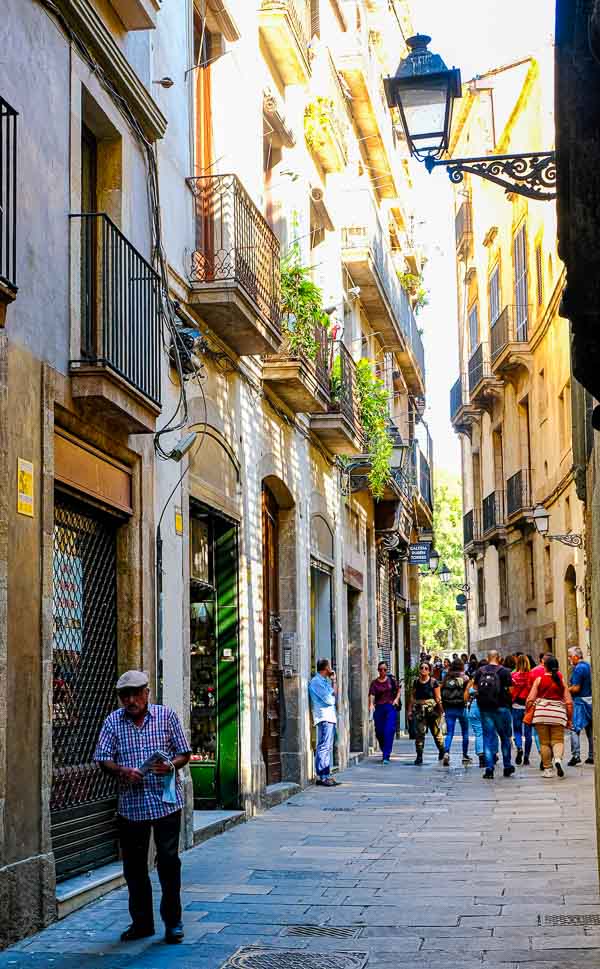
Plaça Reial, the Royal Square, is the first square you’ll stumble upon. Lined with bars and towering palm trees, it features street lamps designed by Gaudí.
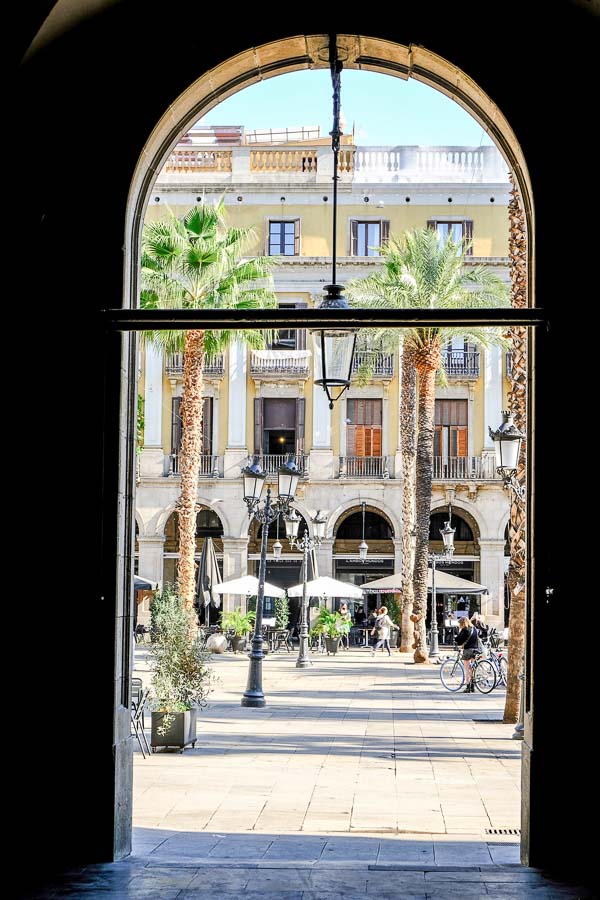
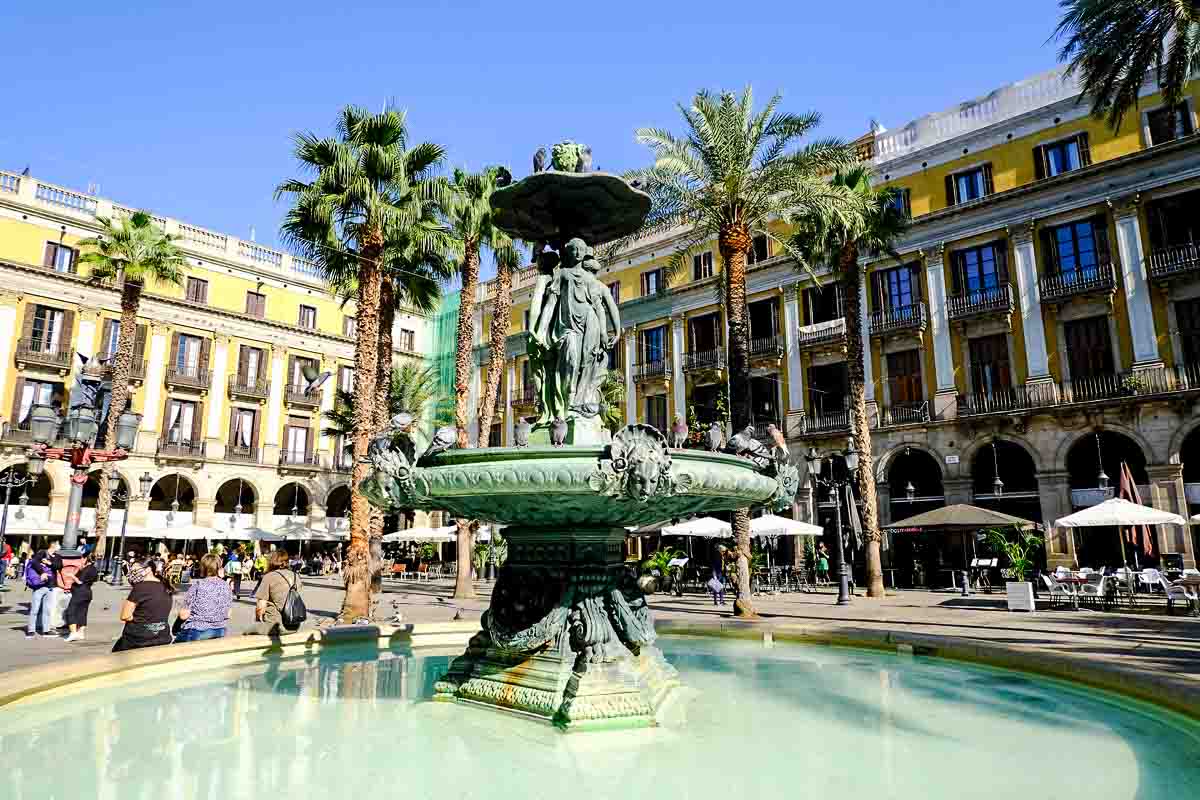
On a smaller scale, Plaça del Rei is a charming square where the Catholic Monarchs are thought to have received Columbus on his return from his first New World voyage.
The ensemble of buildings enclosing the square encapsulates Barcelona’s past. There are remnants of the city’s Roman past, Gothic buildings and a Renaissance courtyard.
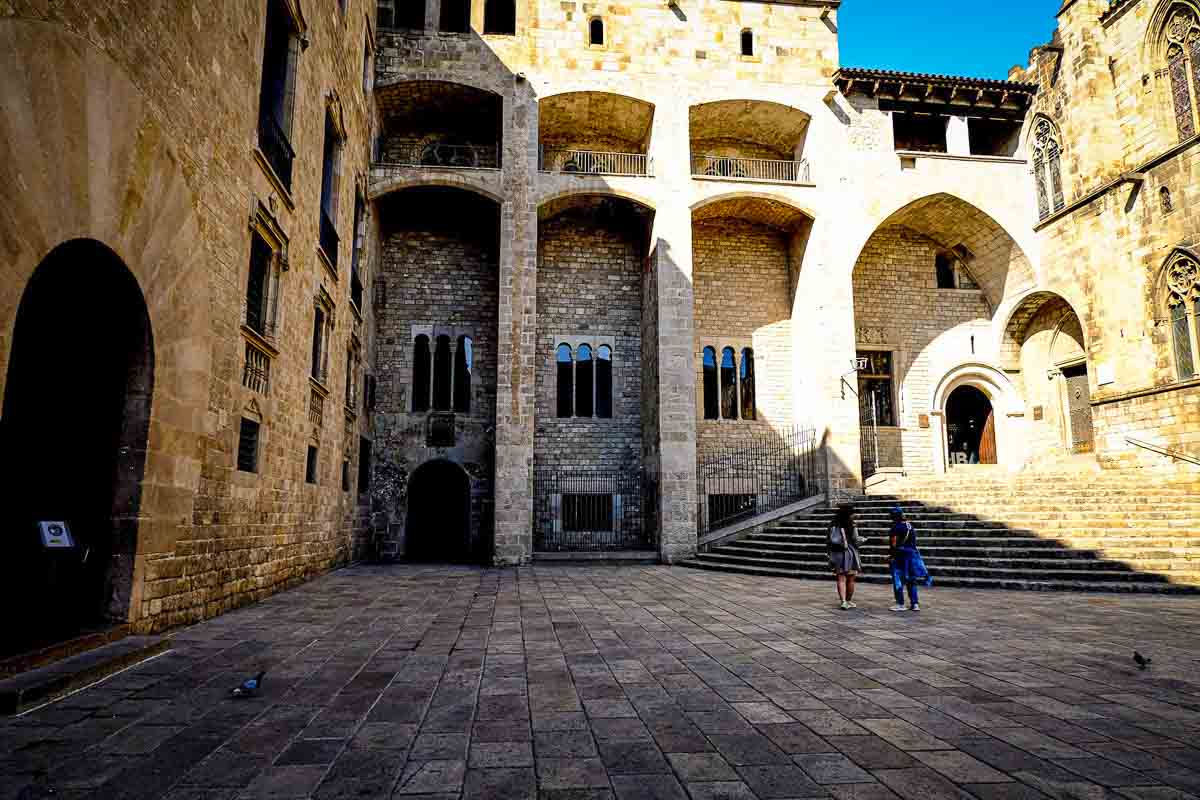
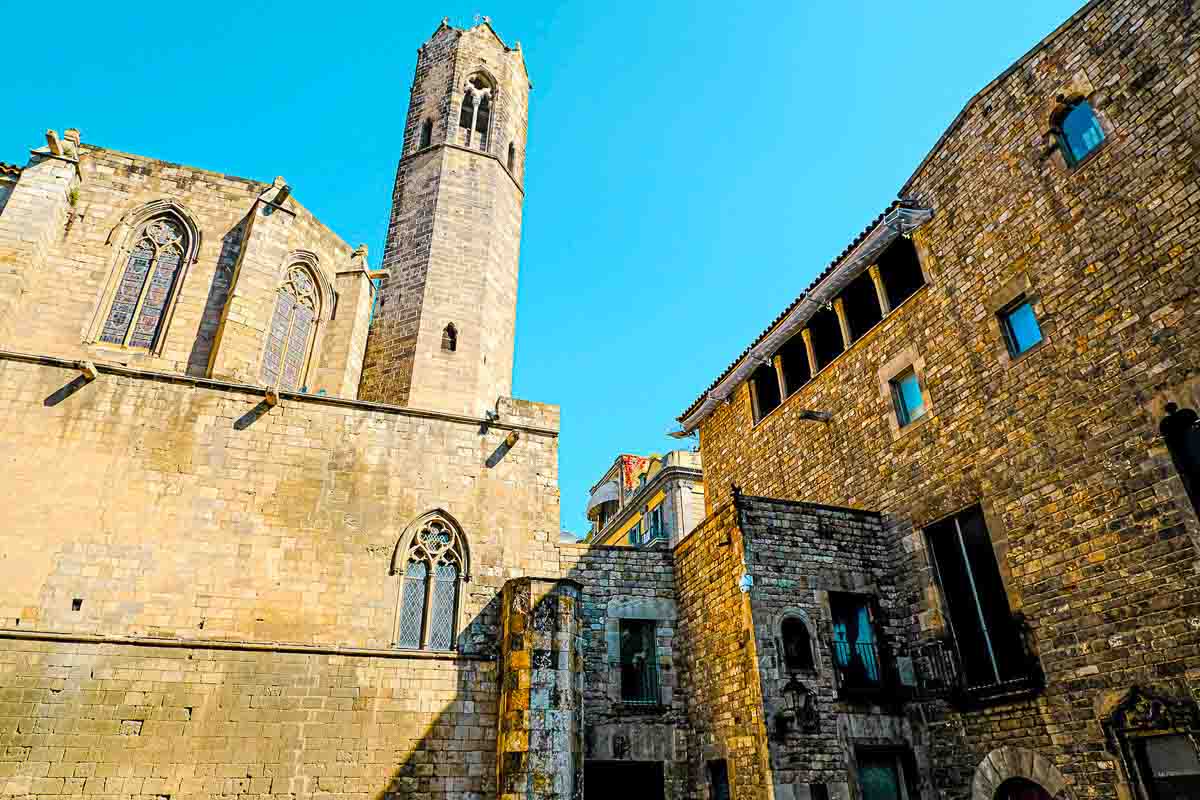
Barcelona Cathedral
But it is Barcelona Cathedral that is the star of the Gothic Quarter.
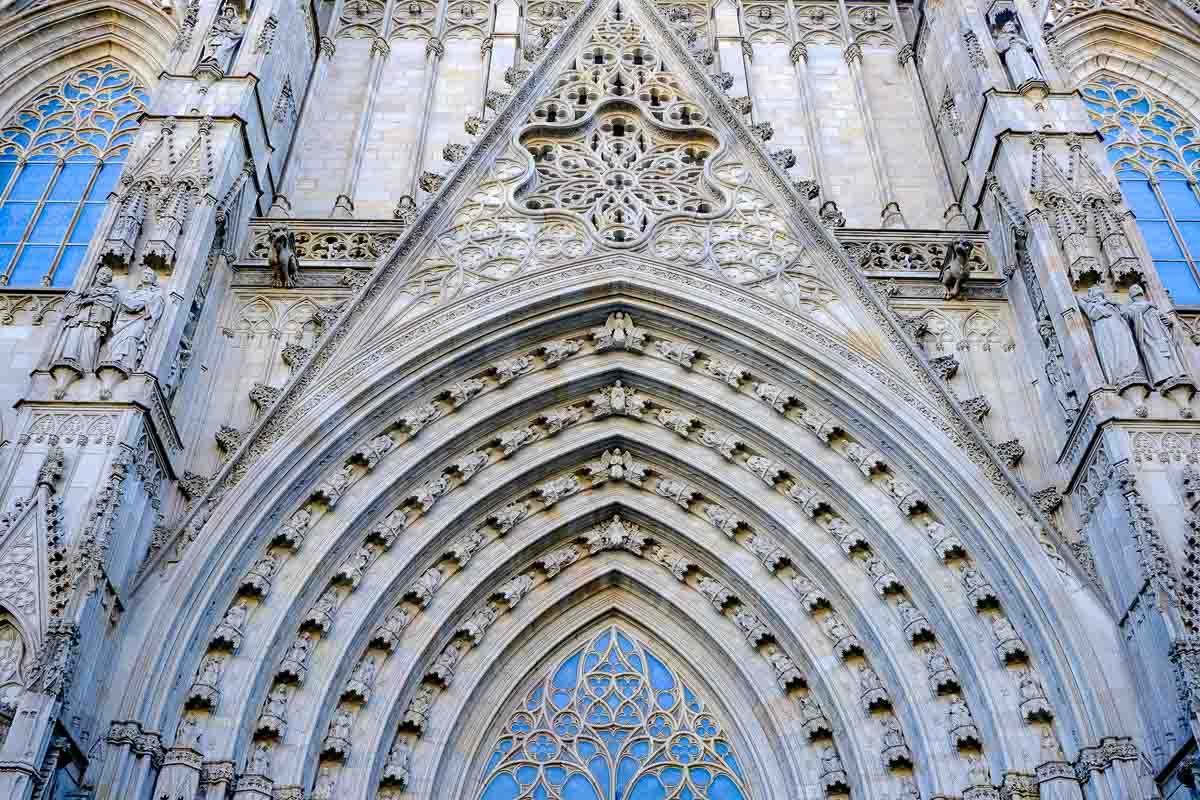
The Cathedral of the Holy Cross and Saint Eulalia (Catedral de la Santa Creu i Santa Eulàlia in Catalan) was built between the 13th and 15th centuries. Highlights of this immense cathedral include a crypt housing the sarcophagus of Santa Eulalia and a 14th Century cloister with orange trees, magnolias and resident swans.
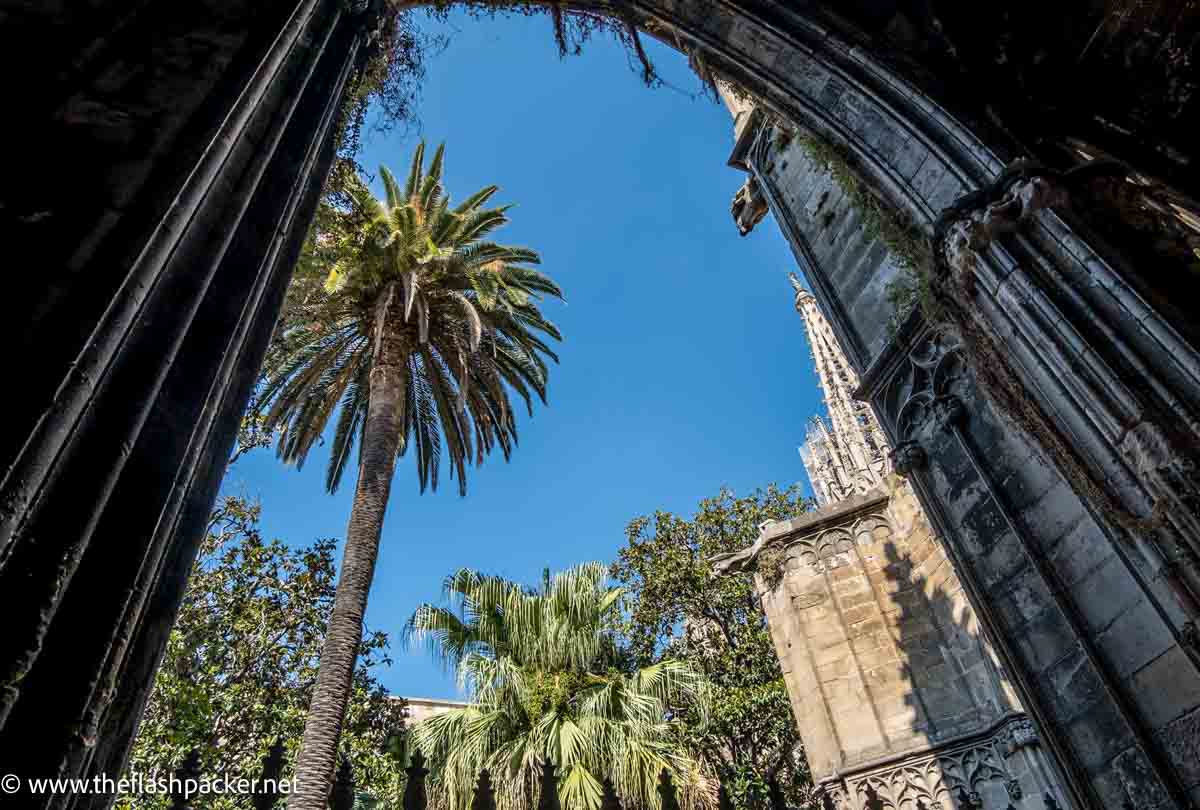
Make sure that you take the lift to the cathedral’s roof to enjoy panoramic city views.
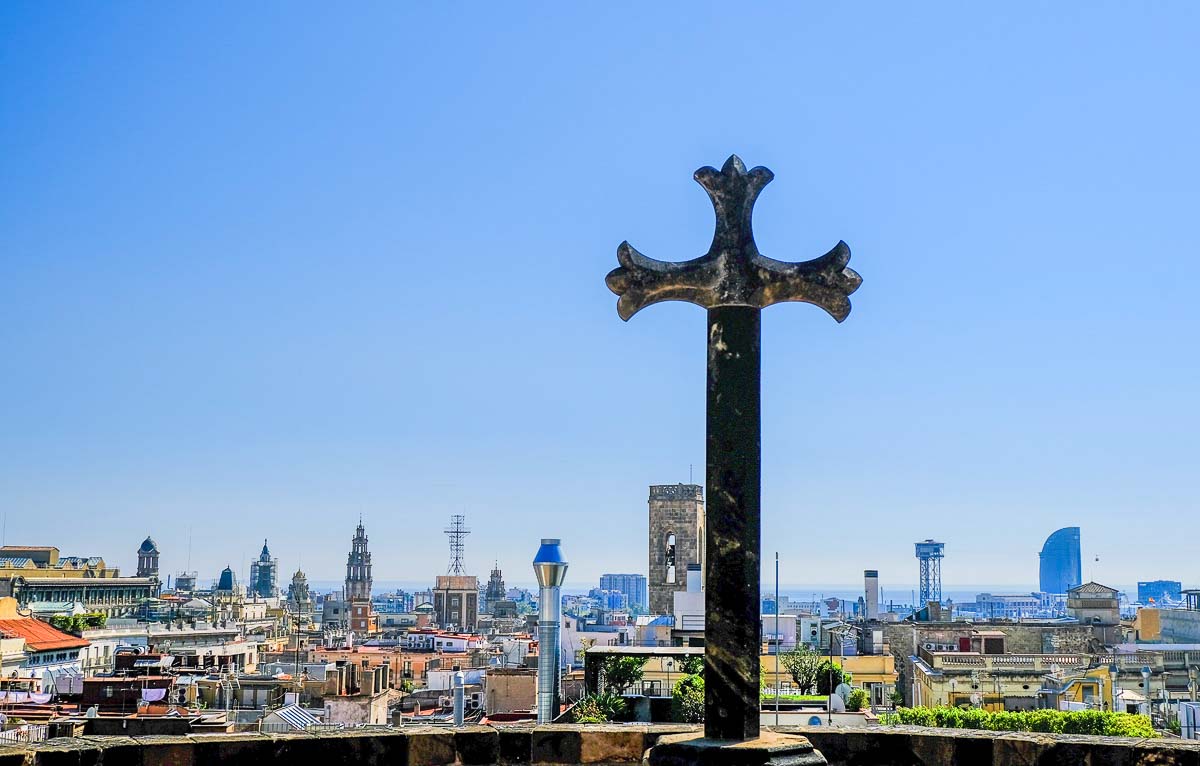
Address: Pl. de la Seu
Opening hours: Barcelona Cathedral is open to tourists between 9.30 am and 6.30 pm on weekdays, between 9.30 and 5.15 on Saturdays and from 2 pm until 5 pm on Sundays. It is open for prayer and worship outside of these hours. Further information is here.
Admission cost: Fee applies
Mercat de la Boqueria
Barcelona’s famous Mercat de la Boqueria (Boqueria Market) is on the opposite side of La Rambla from the Gothic Quarter.
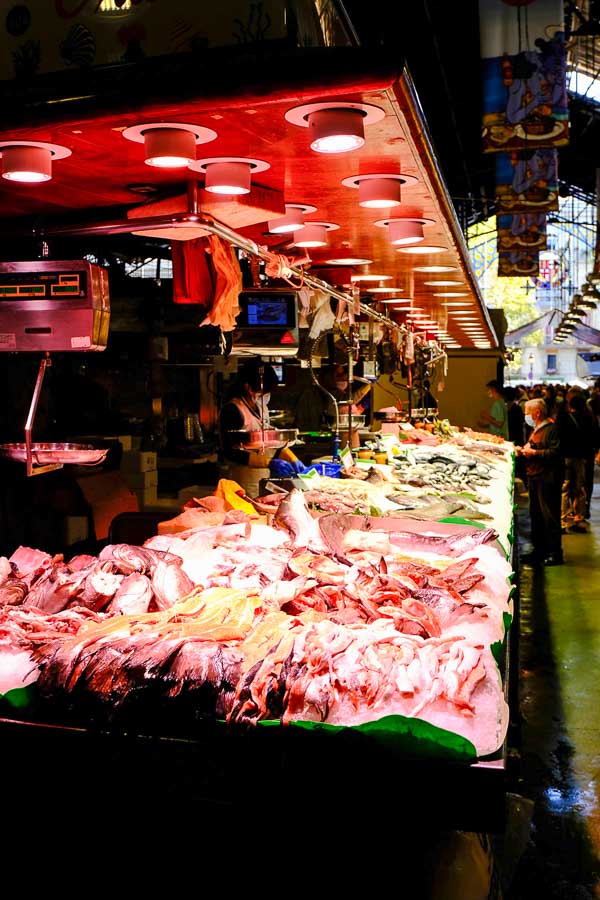
Officially known as Mercat de San Josep, this municipal market is a warren of more than 300 stalls offering delicious products typical of Barcelona’s cuisine. This is the perfect place to stop for lunch.
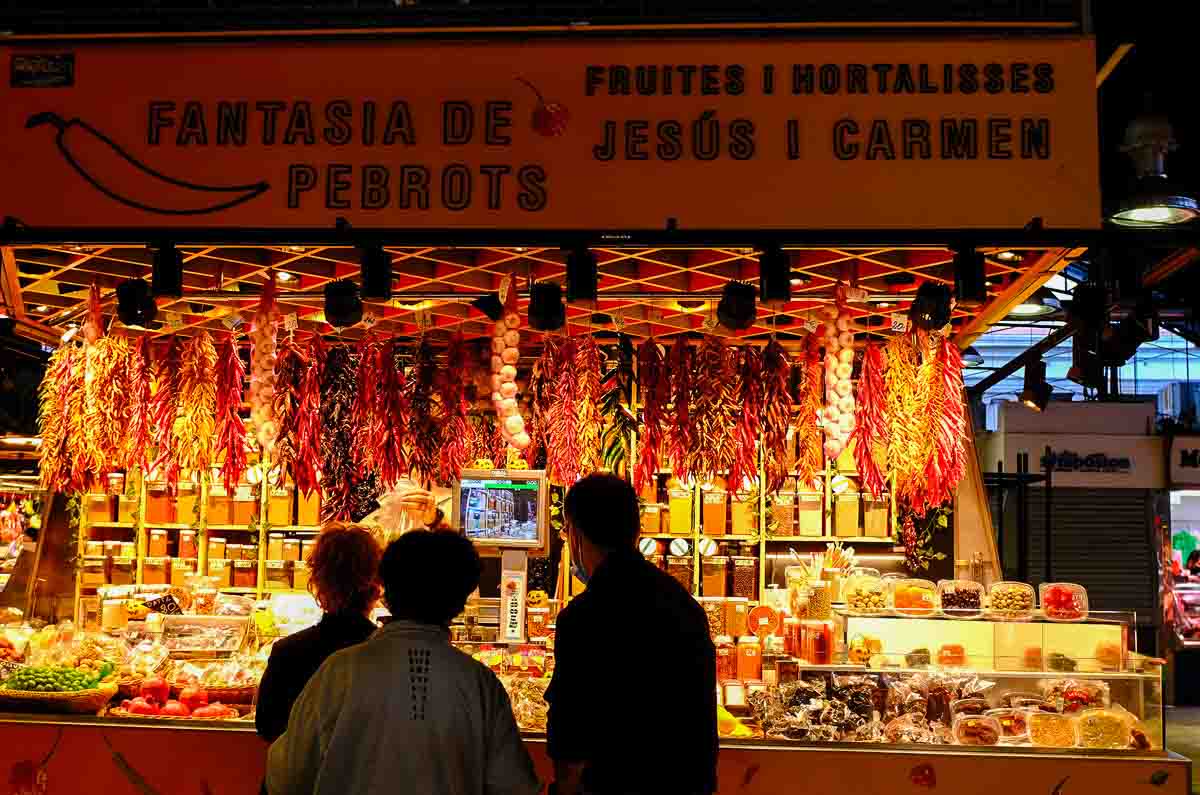
La Rambla
Second only to La Sagrada Familia, La Rambla is the landmark that most tourists identify with Barcelona. Also known as Las Ramblas, this wide pedestrianised boulevard runs for 1.2 km through the heart of the city centre, from Port Vell at its southern end to Plaça de Catalunya at its northern terminus.
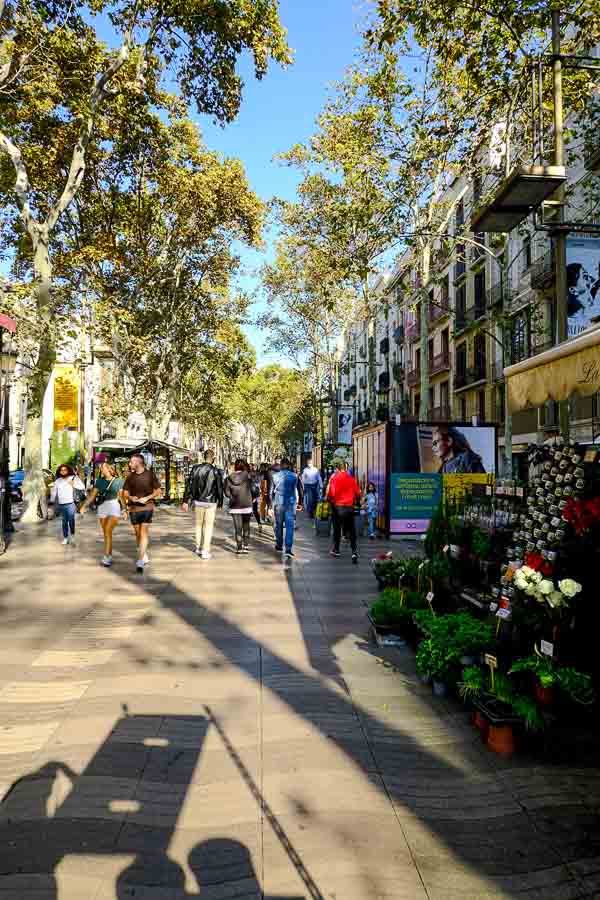
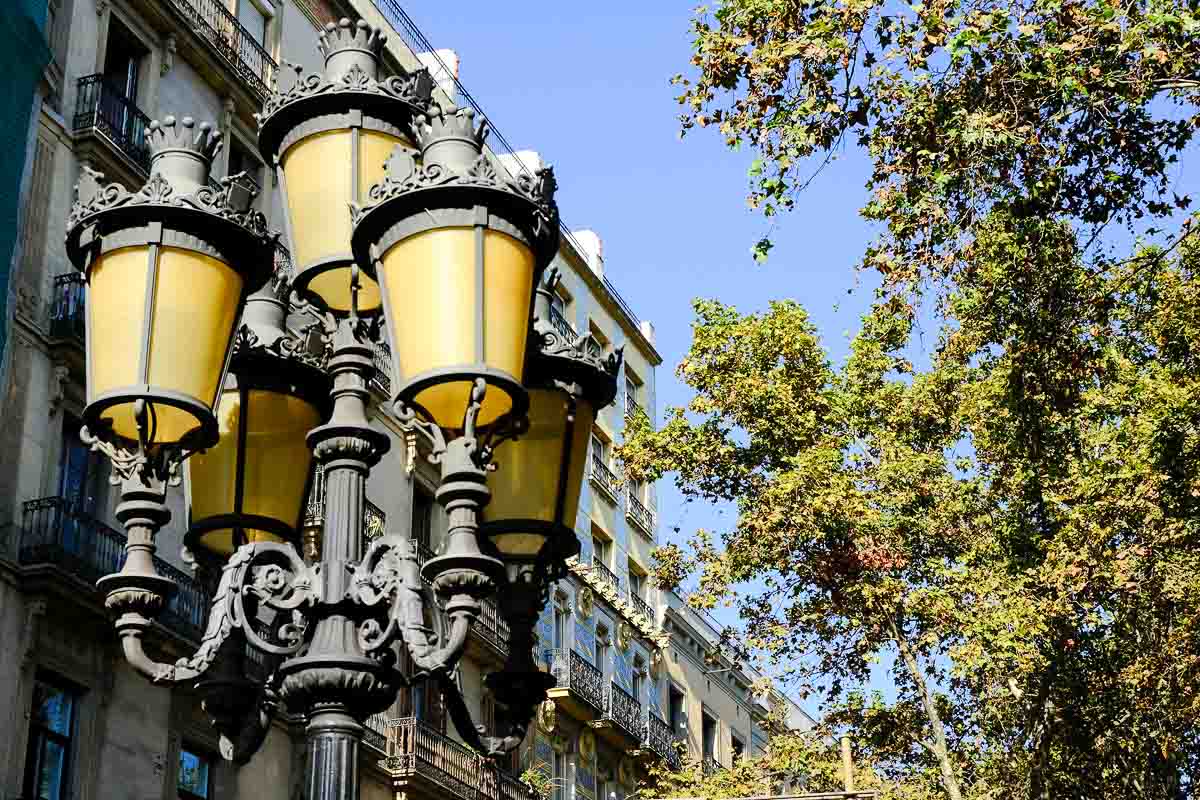
Whilst walking its length is one of the most popular things in Barcelona, I am not a fan. At busy times of the year, it is uncomfortably rammed with tourists, pickpocket central and the southern end verges on the seedy after nightfall.
If you are looking for a relaxing and sedate Barcelona experience, La Rambla is not the place to come.
Plaça de Catalunya
Located at the northern extremity of La Rambla, Plaça de Catalunya is Barcelona’s beating heart.
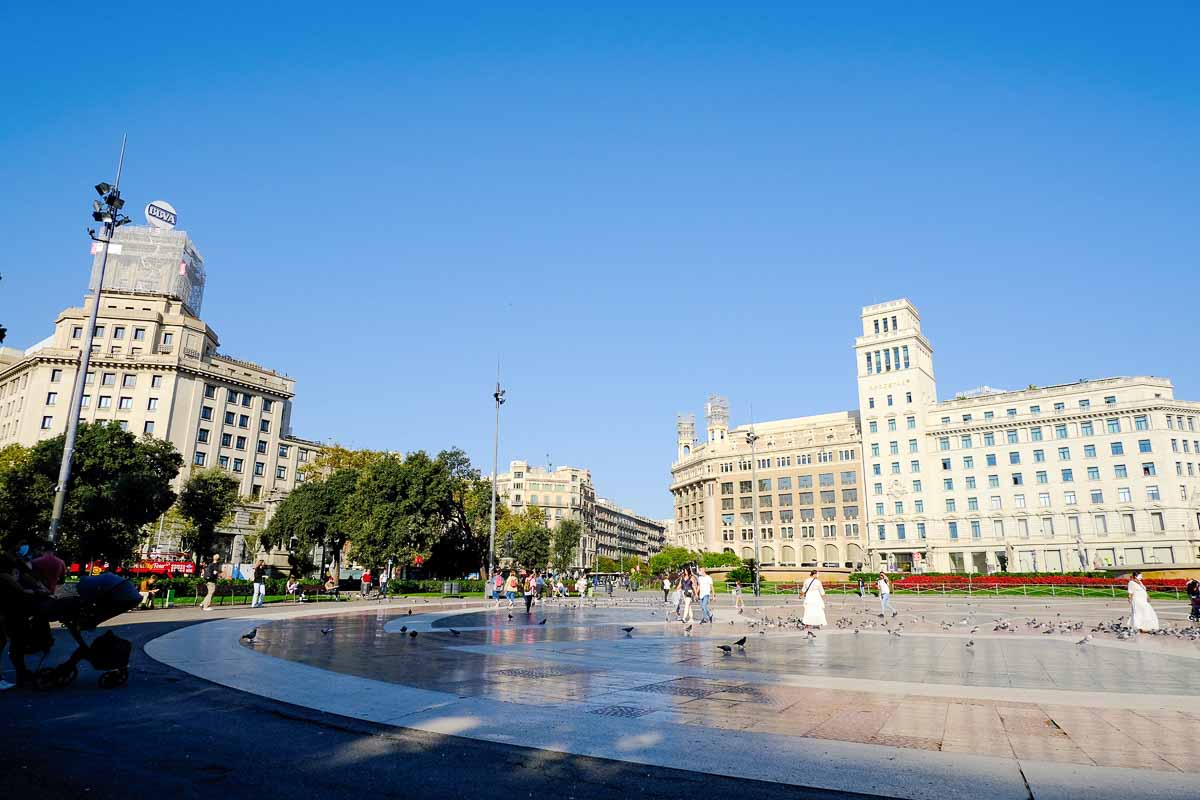
Separating the old town and Eixample district, this square was opened by King Alfonso XIII in 1927 and is a favourite meeting place for locals and visitors alike. Six sculptural groups around the plaza represent the four Catalan capital cities, wisdom and labour, and there is a monument to Francesc Macià, the president of the Catalan Government.
Day 2 – Gaudí’s Fantastical World
The 20th Century heralded an urban renewal programme throughout Barcelona, reaching its zenith with the creation of the world-famous buildings by Antoni Gaudí. Day two of your Barcelona itinerary is dedicated to his whimsical, one-of-a-kind architectural creations that partly define the city.
Casa Batlló
Casa Batlló is the first of two great buildings designed by Antoni Gaudí on Passeig de Gràcia.
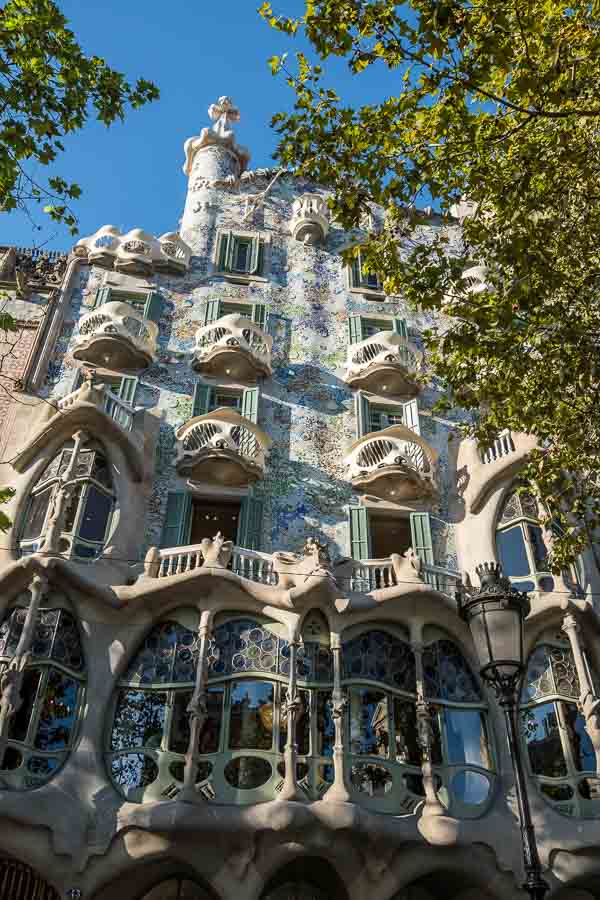
This colourful masterpiece was remodelled for Josep Batlló, a wealthy aristocrat, between 1904 and 1906. Gaudi took his inspiration from the shapes and colours found in marine life and its façade is covered with mosaics reminiscent of fish scales.
The wavy and curvy design – no sharp angles here – is continued inside with exceptional details, including beautiful stained glass windows and colourful tiles.
Address: Pg. de Gràcia, 43
>>> CLICK HERE TO BUY YOUR SKIP-THE-LINE TICKET WITH AUDIOGUIDE
La Pedrera (Casa Milà)
La Pedrera is the second of Gaudí’s creations on Passeig de Gràcia.
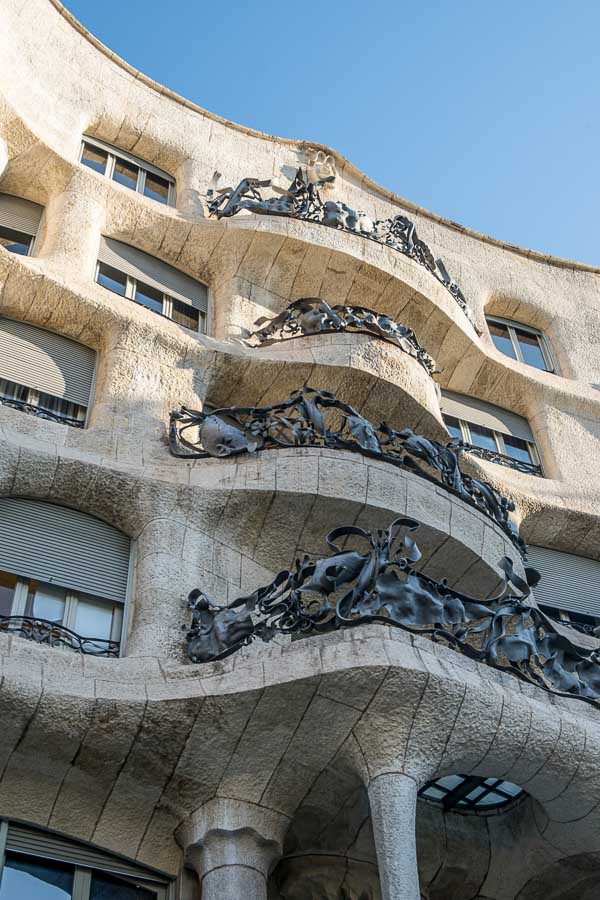
Its original name is Casa Milà, taken from the wealthy Milà family for whom the architect designed the home. But the name Pedrera, meaning “quarry” in Catalan, was used locally to describe the building because of its stone-like appearance.
It’s easy to understand why this name stuck. Unlike other Gaudi buildings, it is devoid of colour and looks like it has been carved from a massive rock, softened with wavy lines and iron ornaments.
Like Casa Batlló, you’ll be hard-pushed to find a right-angle inside. Natural shapes dominate and the stairs leading to the entrances of the apartments wind along the walls.
However, ascending to its roof is the highlight of a visit to Casa Milà. In addition to the bird’s eye view over the city, the chimneys and ventilation towers are artworks in themselves.
Address: Pg. de Gràcia, 92
>>> CLICK HERE TO BUY YOUR SKIP-THE-LINE TICKET WITH AUDIOGUIDE
Park Güell
Visiting Park Guell is like stepping into Gaudí’s wonderland.
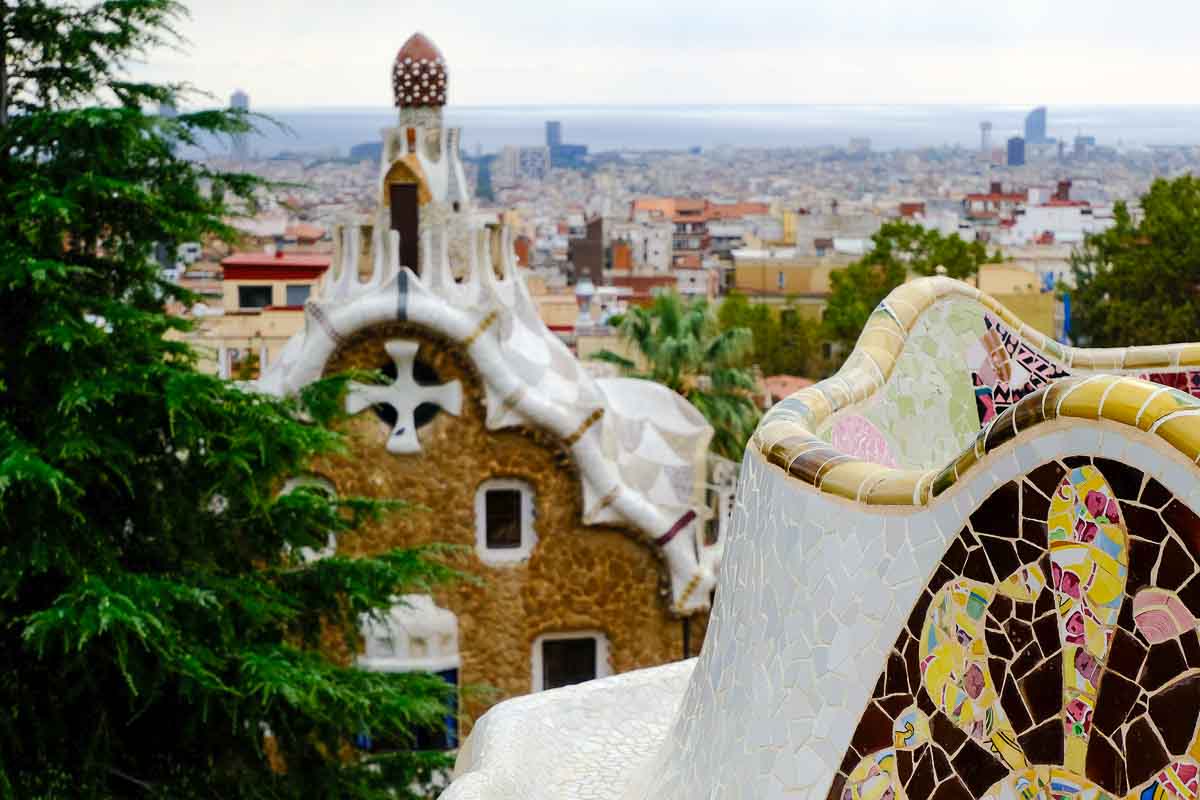
Between 1900 and 1914, Antoni Gaudí designed Park Güell at the request of Eusebi Güell to create a luxury residential park on an unused plot of land in the northeast of Barcelona.
The park’s focal point is its vast main terrace, surrounded by a long curved bench in the form of a sea serpent decorated with colourful tile mosaics. From the terrace, there’s a prime view of the flamboyant buildings of the park’s main entrance.
For me, the park’s highlight was its Hypostyle Hall or Hall of a Hundred Columns, inspired by the Greek town of Delphi. It only has 86 columns but who’s counting?
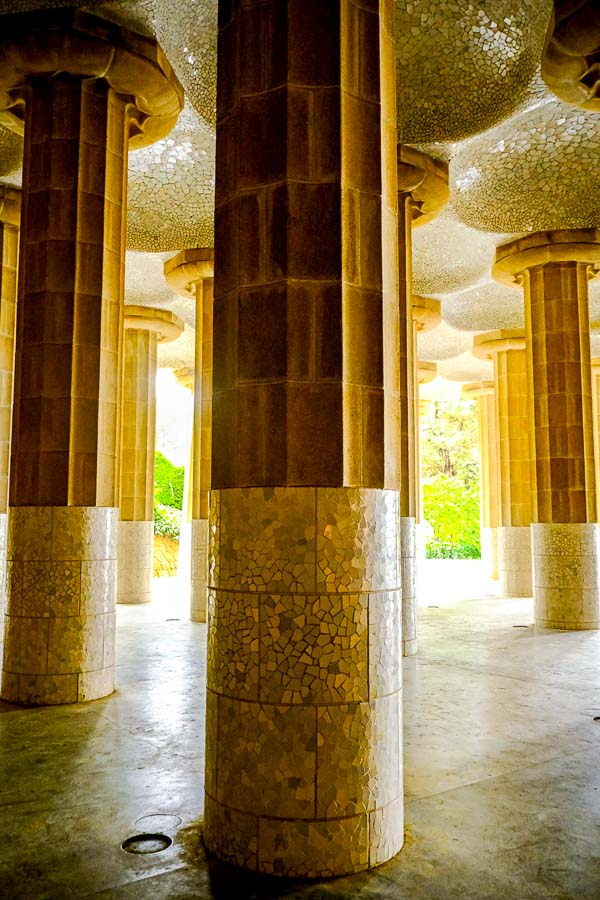
From Park Güell’s high point, a stone hill with three large crosses (El Turó de les Tres Creus), there are panoramic views of Barcelona, including Gaudi’s magnum opus, La Sagrada Família.
Opening hours: The park is open all year round from 08:00 to 21:00 (the monumental area has a different timetable)
Entrance fee: Although entry to most of the park is free, to access the monumental area of Park Guell must pay an entrance fee. It is included in the Go City® Barcelona All-Inclusive Pass.
In common with the other Gaudi sites in Barcelona, Park Güell is very popular. Entry slots each day are limited to 400 people every 30 minutes. To avoid disappointment and long queues, book your ticket online before you visit.
Don’t make my mistake and visit on a Sunday. It felt like half of Barcelona had descended on the park.
Getting there: Take Metro line L3 to Lesseps station and follow the signs.
>>> CLICK HERE TO BUY YOUR SKIP-THE-LINE TICKET
La Sagrada Família
End your 48 hours in Barcelona on a high note at La Sagrada Família.
On the outside, this masterpiece of the post-modern world features intricate and symbolic carvings and is topped by iconic honeycomb Gothic towers.
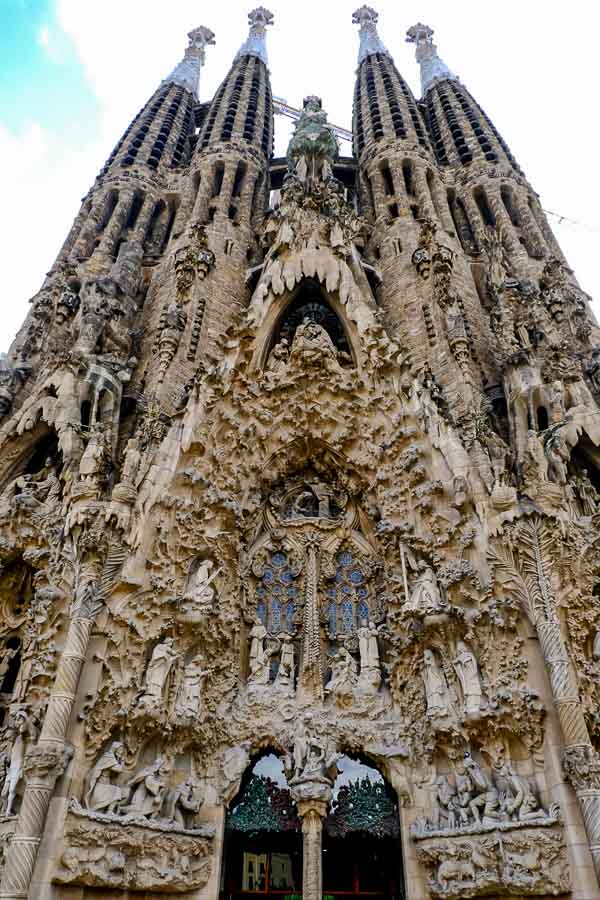
Moving inside, expect an explosion of colour amongst columns shaped like tree trunks, underneath the canopy of a psychedelic forest.
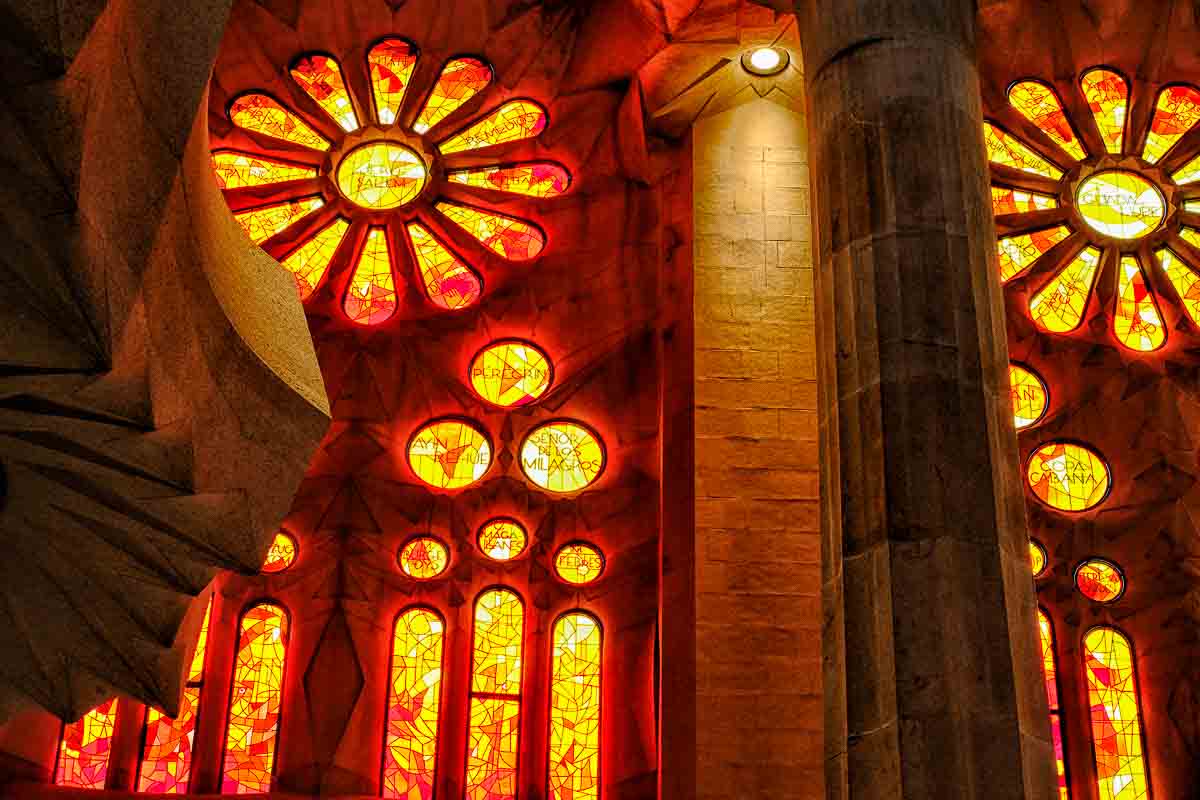
La Sagrada Família is famously uncompleted, a work in progress since 1882. Gaudí was still working on it before he died in 1926, aged 73.
Opening hours: The Basilica of the Sagrada Família has seasonal opening hours. Check here for current information.
Admission cost: Fee applies.
Getting there: Sagrada Família is served by the L2 and L5 lines of the Barcelona Metro system.
>>> BUY YOUR SKIP-THE-LINE TICKET FOR SAGRADA FAMÍLIA WITH AUDIOGUIDE HERE, OR WITH A GUIDED TOUR HERE.
More Things to Do in Barcelona in 2 Days
But perhaps some of the items in this Barcelona itinerary don’t rock your boat or you have more time to spare? If so, here are a few suggestions for things to do in Barcelona.
Visit Montjuïc
Located at 73 metres above sea level between Plaça Espanya and the port of Barcelona, Montjuïc hosted the 1992 Summer Olympics. From its lofty height, there are great views of the city.
To get to Montjuïc hill, catch the 150 bus, use the hop-on-hop-off bus or take the cable car.
>>> CLICK HERE TO BUY YOUR CABLE CAR RETURN TICKET
Crowning the hill is the magnificent Palau Montjuïc, the setting for the light show on Thursdays, Fridays and Saturdays. To bag a good spot for the free Font Màgica de Montjuïc – or Montjuïc Magic Fountain – arrive at least one hour before the show starts.
Take a tour of Camp Nou
This is one for you if you are a football fan or wish to become better acquainted with an important part of Spanish culture. Camp Nou is home to FC Barcelona and the largest-capacity stadium in Europe.
>>> CLICK HERE TO BOOK YOUR CAMP NOU TOUR
Visit Barcelona Aquarium
Located in Port Vell, the Barcelona Aquarium is one of the world’s most important marine leisure and education centres dedicated to Mediterranean undersea life. Its star turn is the massive Oceanarium, a transparent 80-meter-long tunnel allowing you to walk among the sharks, ocean sunfish and many other species.
>>> CLICK HERE TO BOOK YOUR SKIP-THE-LINE TICKET FOR BARCELONA AQUARIUM
Museu Nacional D’Art de Catalunya
Celebrating 1,000 years of art in Barcelona, Museu Nacional D’Art de Catalunya is home to nearly 300,000 pieces of art.
Address: Palau Nacional, Parc de Montjuïc
Museu Picasso
Displaying 4,251 of Picasso’s works, including those from his Blue Period (1901–04), Museu Picasso is home to one of the most important paintings by Picasso in the world. The museum is located in the trendy El Born district. Which is packed with cafes and bars.
Address: c/ Montcada, 15-23
Casa Vicens
Built between 1883 and 1885, Casa Vicens was the first house designed by Antoni Gaudí.
Address: Carrer de les Carolines, 20-26
>>> CLICK HERE TO BOOK YOUR SKIP-THE-LINE TICKET FOR CASA VICENS
Palace Güell
Not to be confused with Parc Güell, Palau Güell is a mansion designed by Gaudí for the industrial tycoon Eusebi Güell. Built between 1886 and 1888, this is also UNESCO-listed.
Address: Carrer Nou de la Rambla, 3-5
Palau de la Musica
Designed by Lluís Domènech i Montaner, Palau de la Musica is a jewel of Catalan Art Nouveau. Self-guided tours of this fully functioning music hall, likened to a giant Faberge Egg, are available.
Address: C/ Palau de la Música, 4-6
>>> CLICK HERE TO BOOK YOUR SELF-GUIDED TOUR OF PALAU DE LA MUSICA
Sant Pau
Also designed by Lluís Domènech i Montaner, Sant Pau is the world’s largest Art Nouveau complex. This UNESCO World Heritage site started life as a hospital complex before becoming a space for events and meetings in 2009.
Address: Carrer de Sant Quintí, 89
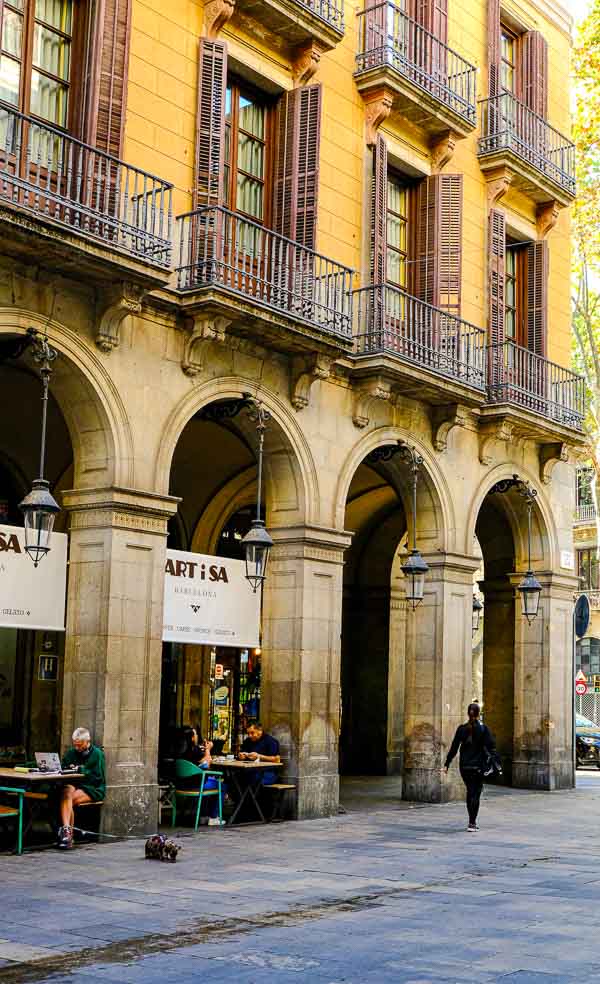
Consider Buying the Barcelona Pass
A city pass can be an excellent way of saving money, particularly if you are trying to fit as much as possible into your day in Barcelona. The Go City® Barcelona All-Inclusive Pass does pretty much what it says on the tin, granting free access to many of the city’s top attractions and activities, including all of the Gaudí sites.
Get the lowdown in my review of the Barcelona Pass or check current prices and inclusions here.
Getting to Barcelona
How to Get to Barcelona from the Airport
Barcelona’s international airport (El Prat Barcelona Airport) is 13 km southwest of the city centre. The easiest and cheapest way to get from the airport to Barcelona city centre is to use the Aerobus service.
This express bus service connects both Terminal 1 and Terminal 2 with Plaça España or Plaça de Catalunya. The Aerobus service runs every 5-10 minutes and the journey time is 35 minutes.
If you are travelling in a small group, a taxi may be a better option.
How to get to Barcelona from the Cruise Terminal
The terminal at Barcelona is the starting and arrival point for many cruises along the Mediterranean. As there are several operating terminals, it’s important to check where your ship will berth.
The closest of these terminals is at Port Vell (the Old Port) at the southern end of La Rambla. However, many of the terminals are located further away from the Ramblas and you will need to figure out the easiest way to get to the city centre.
Chances are that you will be arriving on a larger ship that will dock at the Moll Adossat terminals (Terminals A, B, C and D). Terminal D is the most distant of the four quays and is approximately over 4 km from La Rambla.
Making the journey on foot will take 25 minutes from Terminal A and 45 minutes from Terminal D.
The Cruise Bus(also known as the Blue Bus or Portbus) is a shuttle bus that runs between the Moll Adossat cruise ship terminals and the Columbus Monument at the end of the La Rambla.
Getting Around
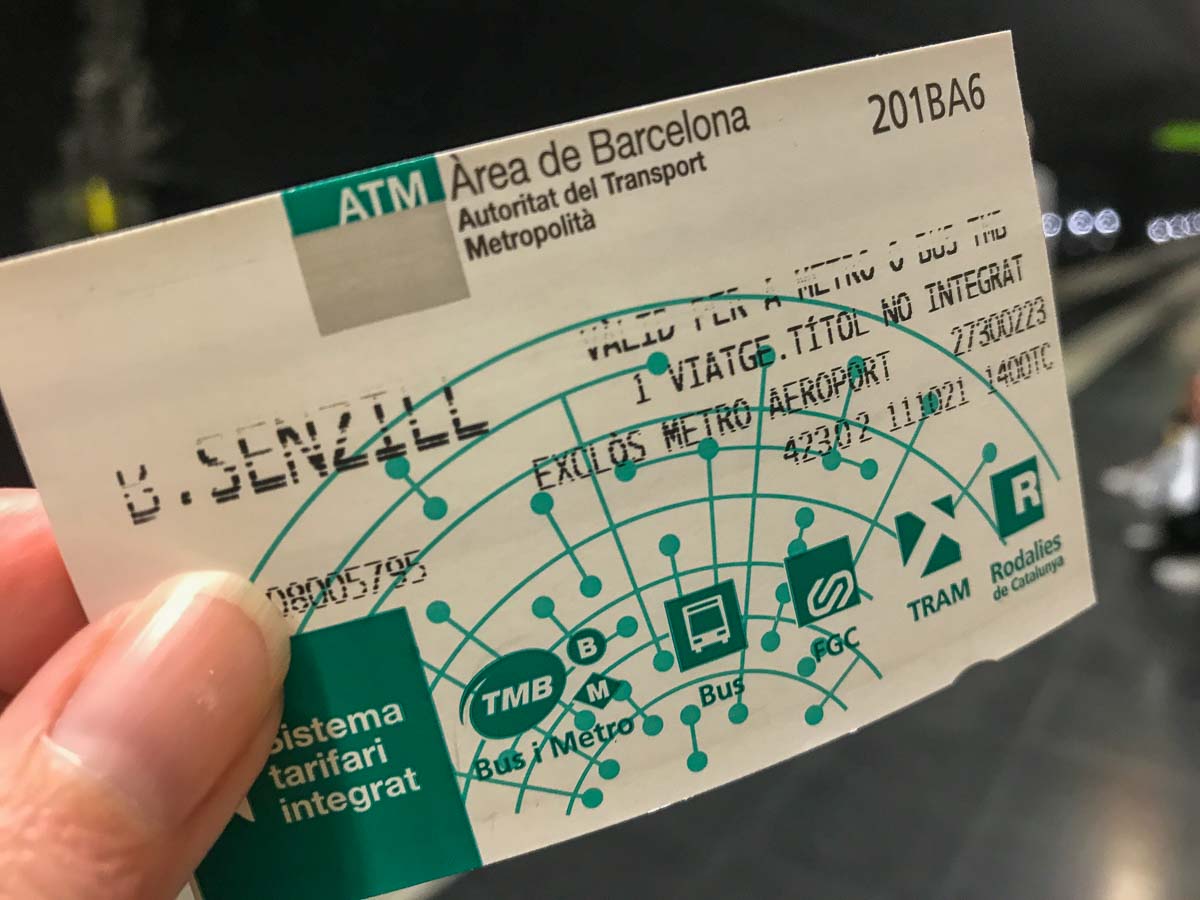
The easiest way to get around Barcelona is to use the city’s metro system. A ticket for an individual journey costs €2.55 in 2024.
If you intend to take more than five journeys on the metro or buses, consider buying a T-Casual ticket. For €12.15 you can take ten journeys with Zone 1 of Barcelona’s public transport system.
Alternatively, a Hola Barcelona card is a tourist travel pass that gives unlimited travel over 48, 72, 96 or 120 consecutive hours.
>>> CHECK PRICES & BUY YOUR HOLA BARCELONA TRAVEL PASS HERE
Barcelona also has a hop-on-hop-off (HOHO) bus.
You can choose from a one or two-day ticket and access two routes with stops that include stops in this Barcelona itinerary and more. There is also an audio commentary available.
>>>>>> CLICK HERE TO BUY YOUR BARCELONA HOHO BUS TICKET
Where to Stay
Barcelona is flush with accommodation to suit all travelling styles and budgets, from backpacker to flashpacker and beyond.
Luxury Hotel: Seventy Barcelona
This is one of the best hotels in which I have stayed in recent years. In a fabulous location in the Gracia district, this new hotel has comfortable and well-equipped rooms, a wonderful bar and terrace and a rooftop swimming pool. Customer service is also first class.
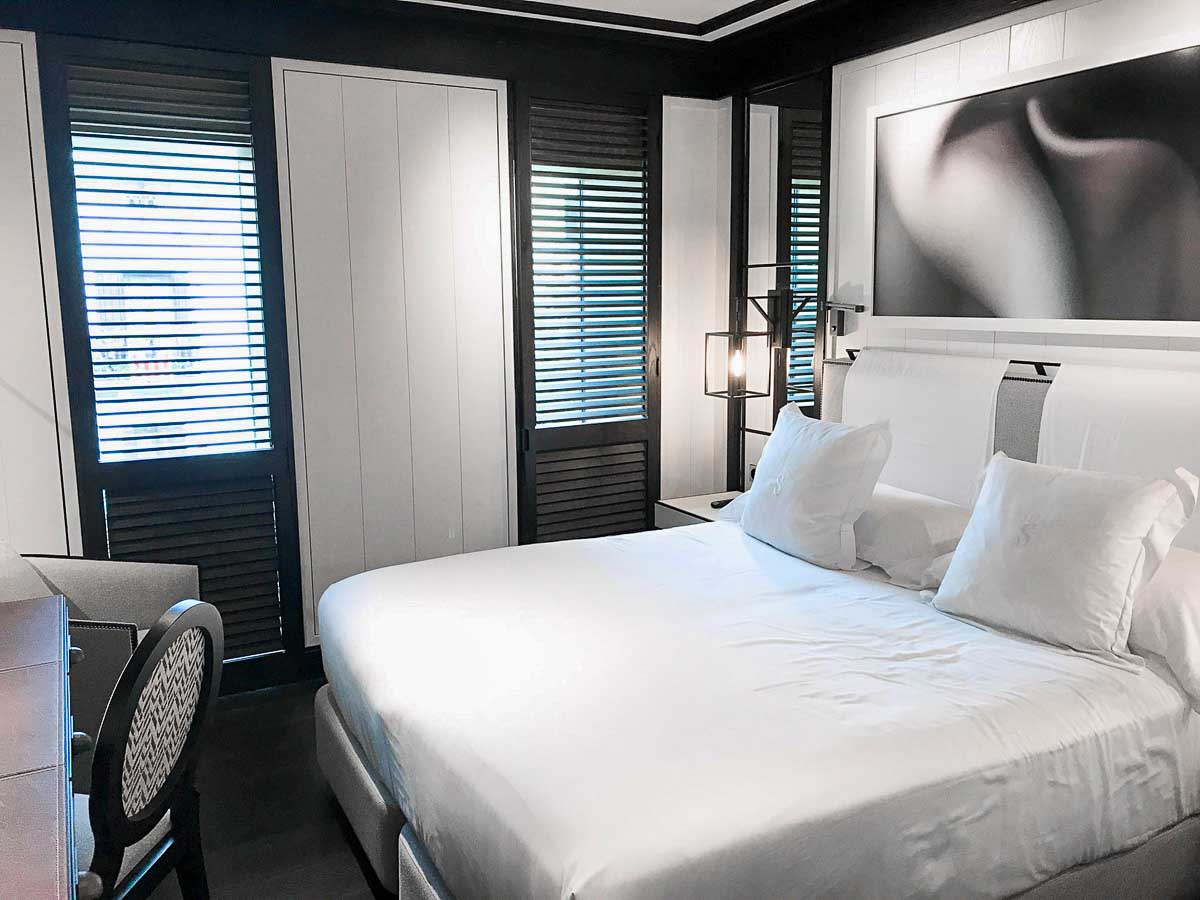
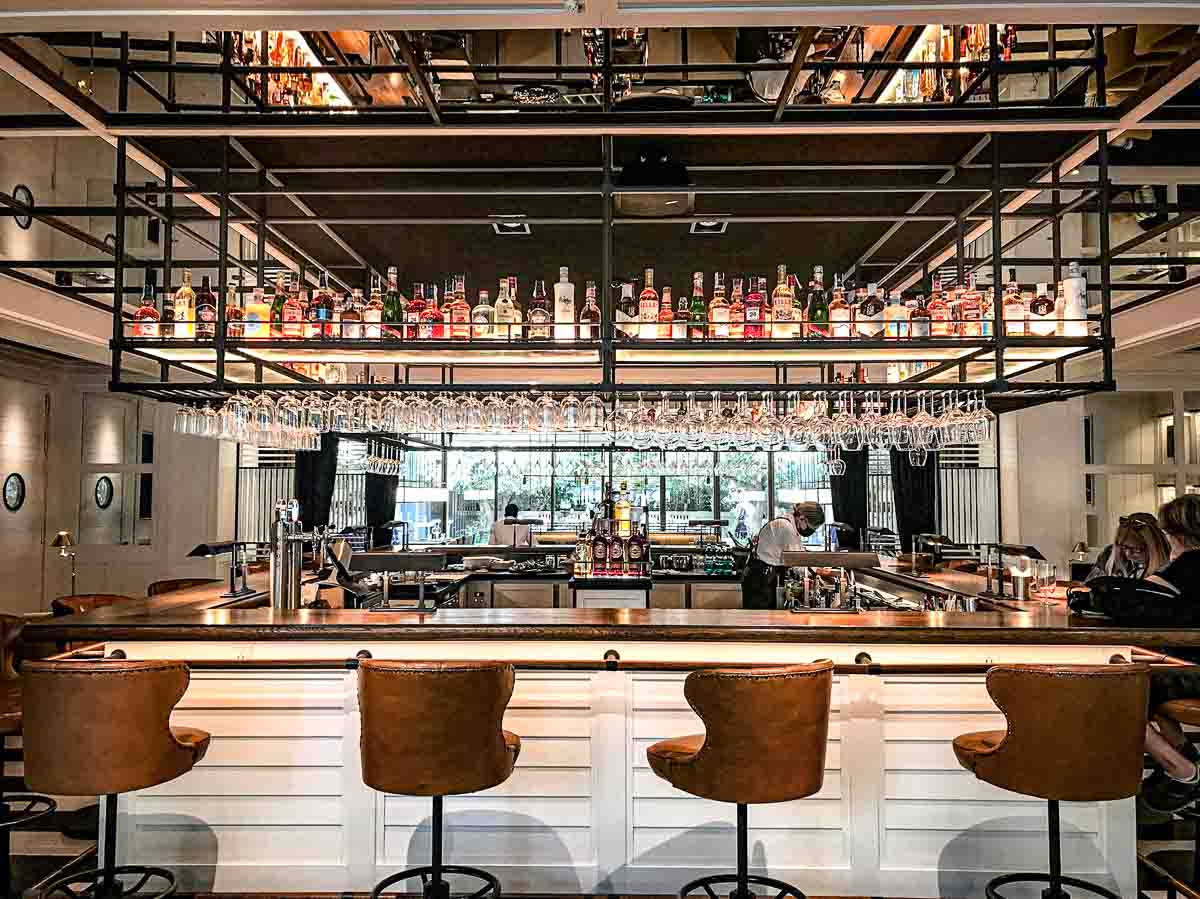
>>> CHECK ROOM RATES & MAKE A RESERVATION HERE
Mid-range: Yeah Barcelona Hostel
This doesn’t look like any hostel that I have stayed in. Located in the Eixample district, a 10-minute walk from La Sagrada Familia, all rooms have an en-suite bathroom and there is an on-site bar. Reviews are stellar.
>>> CHECK PRICES & MAKE A RESERVATION HERE
Budget: Sant Jordi Hostels Rock Palace
This rock music-themed hostel, also in Barcelona’s Eixample district, features a rooftop terrace with an outdoor pool. Cheap breakfasts and dinner deals are offered as well as fun activities.
>>> CHECK PRICES & MAKE A RESERVATION HERE
>>> None of these places take your fancy? Then discover other great accommodation choices in Barcelona here.
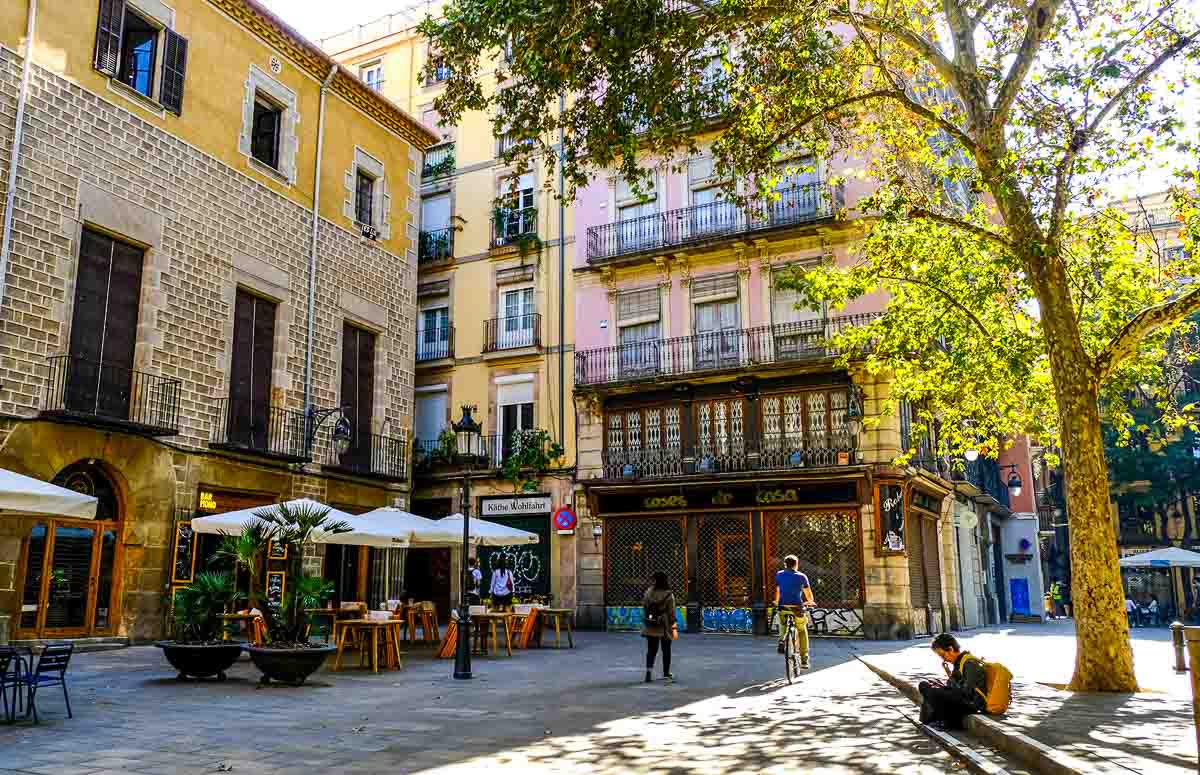
Best Time of Year to Visit Barcelona
Barcelona is busy with tourists year-round but the best time of year to visit is from May to June or during autumn (fall) when temperatures are balmy – you are looking at the low to mid-70s
Avoid visiting Barcelona in the height of summer when the mercury hits the 80s and it can be stiflingly humid. I made this mistake once; I won’t make it again.
Winters in Barcelona are mild with highs in the 50s.
Is Barcelona Safe for Solo Travellers?
As a whole, Spain is not only one of the best places for solo travellers in Europe, especially if you are travelling alone for the first time, but it is also one of the best solo travel destinations across the globe. It has a rich history, a vibrant cultural scene, buzzing nightlife and well-developed infrastructure.
Keeping safe when travelling alone is a key consideration for female solo travellers. Whilst Barcelona is generally a safe city, it is infamous for pickpockets, especially on the metro and La Rambla.
Remain vigilant, keep your belongings close to you and use your hotel safe to store valuables.
Enjoy your two days in Barcelona
It’s a wonderful city that is 100% worth visiting.
But perhaps you have limited time here? If so, check out the best things to do in one day in Barcelona. It’s the perfect Barcelona itinerary if you are visiting on a cruise stop.
Looking for more information to plan your visit to Gaudí’s masterpiece? Then, check out my in-depth guide to La Sagrada Família.
Are you looking for a rewarding day trip? If so, the historic city of Tarragona is an easy day trip from Barcelona by train, has oodles of charm and show-stopping sights.
Happy travels.
DISCOVER MORE ABOUT SPAIN!
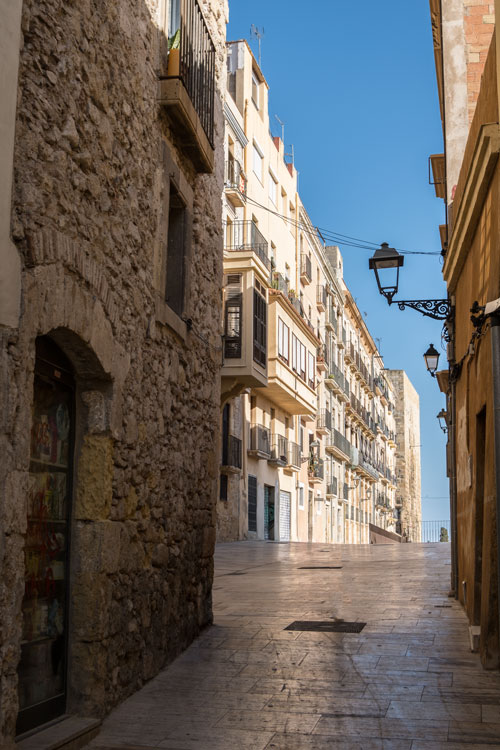
- What is Spain Famous For? 20 Reasons to Visit Spain
- Top 10 Things to Do in Tarragona: Spain’s Roman City by the Sea
- Tips for Visiting Sagrada Família: Things You Should Know Before You Go
- One Day in Barcelona: Itinerary & Best Things to Do
- One Day in Palma de Mallorca, Spain
- 15 Fabulous Reasons for Visiting Valencia, Spain
- Solo Travel in Portugal and Spain: 10 Unmissable Places to Visit
- The Ultimate One-Week Tenerife Itinerary & Guide
- 10 Best Things to do in Puerto de la Cruz, Tenerife
- Exploring Tenerife by Bus: TITSA Buses Made Easy in 2022
